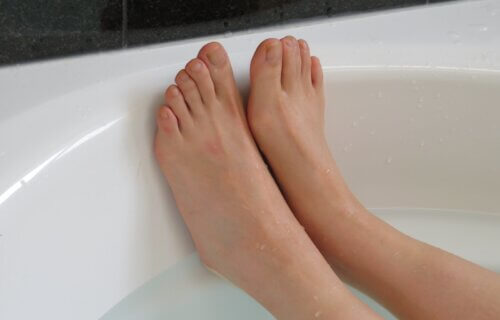WASHINGTON — When was the last time you scrubbed behind your ears or washed between your toes in the shower? These hard-to-reach places may seem inconsequential in the grand scheme of keeping up with one’s cleanliness, but researchers from George Washington University suggest that those areas tend to accumulate particularly unhealthy strains of bacteria and microbes if you consistently neglect them come bath time.
Just like our stomachs, human skin is home to millions of microscopic viruses, bacteria, and fungi. While the notion of all those microorganisms crawling around our skin is likely far from comforting for many, it’s important to understand that the vast majority of microbes living on our skin are beneficial and help ward off pathogens. Now, this latest work finds the composition of the human skin microbiome varies across dry, moist, and oily regions of the skin — with skin behind the ears and between the toes being especially vulnerable to unhealthy microbe buildup.
Led by Marcos Pérez-Losada, an associate professor of biostatistics and bioinformatics at the GW Milken Institute School of Public Health, the team at the GW Computational Biology Institute says they set out to test what they call “the Grandmother Hypothesis” with this study. Keith Crandall, the director of the Computational Biology Institute and professor of biostatistics and bioinformatics at GW explains his own grandmother always used to tell the children in his family to “scrub behind the ears, between the toes and in the belly button.”

So, after all these years, Prof. Crandall theorized that those bodily areas are probably washed far less often than other regions like the skin on the arms or legs, and thus, may house very different types of bacteria.
Would this theory actually hold up when put to the test? Researchers put together an innovative genomics course and then recruited a group of students to help find an answer. In all, a collection of 129 graduate and undergraduate students learned how to collect their own data by swabbing certain moist and oily hotspots: behind the ears, between the toes, and in the naval. Each student also collected samples from control dry areas like the calves or forearms.
Next, participants learned how to extract and sequence DNA samples taken from their skin as a means of comparing the microbes living in the hotspots to those residing in control regions.
This led to the discovery that forearms and calves, which people usually clean more often and more thoroughly at bath time, displayed a more diverse (and potentially healthier) group of microbes in comparison to samples collected from the hotspots.
The research team explains that when “bad,” or trouble-making microbes take over a microbiome they can end up changing the bacterial balance in a way that is detrimental to health. If the microbiome tips in favor of detrimental microbes, skin diseases like eczema or acne can appear, Prof. Crandall adds.
All in all, study authors believe they largely proved the grandmother hypothesis true. They believe their work suggests cleaning habits can change the microbes living on your skin, and consequently, the overall health of your skin.
Researchers say the work they are conducting may be the first ever focusing on the diversity of sites across the skin microbiome in healthy adults, hopefully providing an invaluable reference point for future research. Prof. Crandall adds that much more research is necessary in order to better understand how collections of microbes on our skin influence health and disease outcomes.
The study is published in the journal Frontiers in Microbiology.
You might also be interested in:
- Best Face Serum: Top 5 Products Most Recommended By Skincare Experts
- 2 in 3 people may have hand dermatitis now due to over-washing during COVID
- Don’t shower every day? 49% actually agree with stinky bathing advice from celebrities

